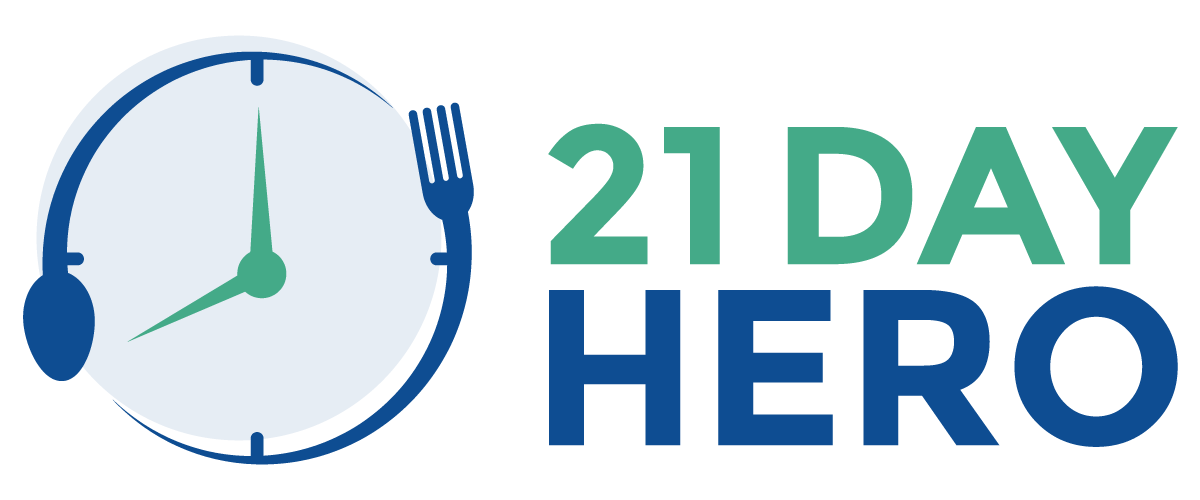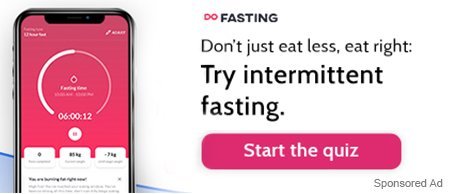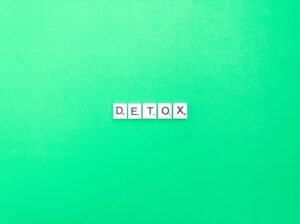Keto diet 101 | Intermittent Fasting and Keto Results | Benefits | Tips to get started | Keto foods | Counting carbs | Ketosis
Intermittent fasting has proven to be an efficient way to lose weight whilst simply controlling your eating times.
Another way of eating which has taken the health space by storm is the ketogenic diet, also known for keto. Keto diet promotes eating low carb high-fat foods in order to help you burn fat more effectively.
More and more people, including celebrities, are combining the two in order to reach better and faster weight loss and fat loss results. Just look at Jenna Jameson, who lost over 80 pounds by following keto intermittent fasting after gaining weight during her pregnancy!
Which makes us wonder – is keto intermittent fasting indeed the best combo out there? Should you do it? How does it compare to doing the intermittent fasting diet or keto diet alone?
And if you were to start keto and intermittent fasting, how should you go around it to reach the best results possible?

What is Intermittent Fasting & Keto combination?
Let’s start with a short introduction to the intermittent fasting and the keto diet.
Intermittent Fasting 101
Intermittent fasting, simply speaking, means controlling WHEN you eat and when you don’t. The period when you don’t consume any food or drinks (besides water or other calorie-free drinks) is called the fasting window. And the rest is called the eating window.

The beauty of this method of eating is that you can easily customize it to your lifestyle. Meaning, you might choose to fast during the mornings and eat later in the day, or eat in the morning and fast throughout the rest of the day.
The most popular intermittent fasting method is 16:8 — fasting for 16 hours and eating for 8 hours. It’s the most sustainable and easiest method to start with, hence we recommend it for the 21-day Intermittent Fasting Challenge. Other more commonly used intermittent fasting methods are 18:6, 20:4, OMAD and alternate-day fasting.
A popular misconception is that you can allow yourself to eat anything while following intermittent fasting, including fast food, sugary and highly processed dishes. If your goal is to lose weight, improve productivity and simply get healthier, it is not true and it is essential to stick to healthy meals.
This means eating whole foods and avoiding the usual suspects such as sugar, processed foods, empty carbs, etc. To learn more about intermittent fasting, jump to our detailed fasting guide here.
Keto diet 101

A ketogenic diet, also known for keto, is very low in carb, moderate in protein and high in fat. It promotes reducing your carb intake to an absolute minimum and replacing it with fat to put your body into a metabolic state called ketosis.
What’s ketosis you ask?
Ketosis is when your body uses stored fat as a source of energy rather than carbohydrates.
While on a Keto diet, your body starts to use a different type of fuel – instead of relying on sugar (glucose) that comes from carbs, it relies on ketones, chemicals made in your liver that build up when your body starts burning stored fat for energy.
The great thing about the keto diet is that it allows you to eat delicious high-fat foods such as butter, cream, bacon, and nuts — something that’s usually not welcomed on other diets. By consuming such high-fat items, you are also kept full and satisfied for much longer, with those hunger pangs kept at bay.
Keto diet macros
The most common way to eat on a keto diet is following a 5% carbohydrates, 70% fat and 25% protein macronutrient distribution. This is also recommended by our registered dietitians, who prepared easy to follow 21-Day Keto Meal Plans for you.
Another way to do keto is by calculating your daily intake of net carbs (vs. calculating other macros like protein and fat as well). Net carb limit to reach ketosis varies from person to person but generally, it is a maximum of 20g – 50g of net carbs per day.
Counting all the macros or even just the net carbs can be really overwhelming, especially in the beginning when you are already going through a tough phase of adjusting your body to a new lifestyle without carbs. If you want to take this out of your plate and have all figured out for you — check out our 3-week Keto Fasting Meal Plans with simple delicious recipes.
Another great option for anyone trying out or wanting to stick to keto is Keto Cycle. It creates a personalized Keto diet plan based on your gender, age, activity level and weight loss goals.
What is Intermittent Fasting and Keto?
When combined together, keto and intermittent fasting create a powerhouse of fat burning within your body. And this is not just science speaking — we’ve seen hundreds of people achieving desired intermittent fasting results much faster with a keto diet.
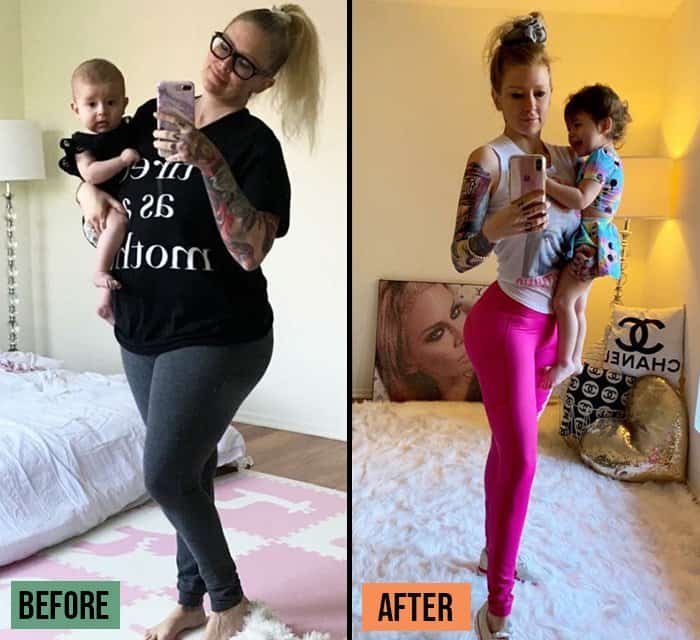
Jenna Jameson losing 60lbs (27kg) with intermittent fasting and keto diet.
Read more: 12 Incredible Weight Loss Success Stories of Celebrities
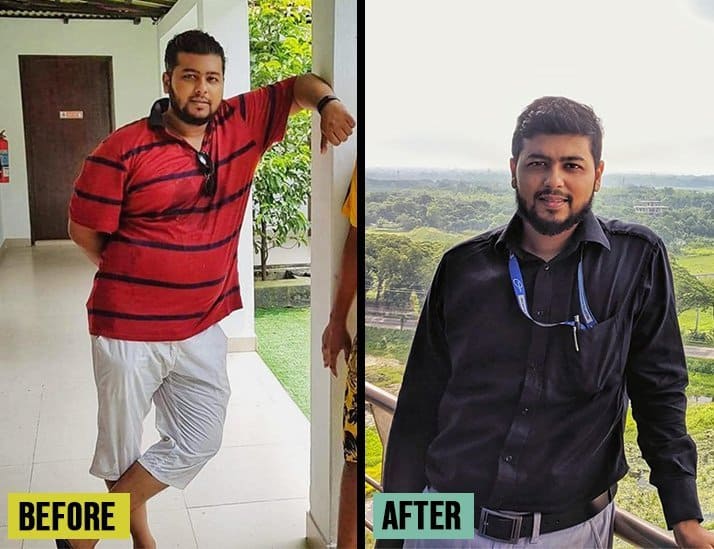
Tanzilur losing 59 lbs (26.8 kg) with intermittent fasting and keto diet.
Read more: What Intermittent Fasting Results Can You Expect
So how to do intermittent fasting on keto? Combining keto and intermittent fasting is all about putting in place an 8-hour eating window (or other depending on your fasting schedule) and ensuring that you stick to the required carbohydrate, protein, and fat distributions to remain in ketosis.
To get more guidance and a clear plan on what and when to eat, sign up for our 21-Day Keto Fasting Challenge right now and see your weight drop in no time!

Keto intermittent fasting benefits
Keto and intermittent fasting work extremely well together due to a number of complementing features, and as a consequence offers a great variety of unique health benefits.
Promotes weight loss
Both intermittent fasting and keto diet encourage your body to use fat for energy rather than glucose. Therefore combining intermittent fasting with keto diet boosts your weight loss results. Increased muscle mass and lower body fat, as well as increased energy levels. Start by checking your body weight before starting the program, you will see some amazing results in the short term, and long term.
Creates a caloric deficit
The fasting aspect eliminates at least one meal from your day, automatically creating a caloric deficit — a key component of weight loss (unless you compensate with more food during the eating window).
Reduces your appetite by making fasting easier
Replacing carbs with fat on a keto diet causes appetite to decrease, possibly due to shifts in appetite-regulating hormones. Once you’re fat-adapted on the keto diet and your appetite is lower than normal, you’ll find the fasting portion of intermittent fasting easier.
Insulin
Improved insulin levels, insulin resistance and insulin sensitivity. There are studies showing HUGE benefits its this area. Improvement in blood sugar levels is common, with improved blood sugar control.
Brain Function
Many see improved brain function, sharpness, and mental acuity. There have even been studies of reducing the chance of alzheimer’s disease, which is good news! Improved cognitive function is a huge benefit.
Blood Pressure
If you have high blood pressure, there has been some data showing lowering blood sugar with intermittent fasting and Keto.
How Do I know if I’m in Ketosis?
There are certain devices to Test if you are in Ketosis, so I highly recommend getting something that you can instantly test your Ketosis status, so that you can maximize your weight loss benefits. The one I use is the KEYTO Breath Sensor, this is incredible. I’ve used the pee strips, and other methods, but this is FAR better, you can take it anywhere, and test anytime. Get the Keyto Breath Sensor Here. Or Click the image below.

How to do intermittent fasting on keto 8 steps to get started
Step 1: Ease into Intermittent Fasting
The best way to start keto intermittent fasting is to ease into an intermittent fasting lifestyle.
If you are a complete beginner to fasting, start with a few days of 16/8 intermittent fasting without making any changes to your diet.
If you have experience with fasting and feel confident with it, you can skip this step and go straight to making dietary changes.
To help your body adapt to intermittent fasting, our 21-Day Keto Fasting Challenge Plan suggests gradually reducing your eating window. Meaning, you start with a 12-hour fast on the first day, and gradually increase it to 16 hours.
How to pick your keto fasting / eating window? For most people skipping breakfast is the easiest but some choose to pass on dinner instead. Few potential scenarios for a 16/8 keto intermittent fasting:
- If you start eating at 8 am, start fasting at 4 pm
- If you start eating at 12 pm, start fasting at 8 pm
- If you start eating at 2 pm stop eating and start fasting at 10 pm
STEP 2: Introduce a Keto diet: what to eat?
Feel good about sticking to your intermittent fasting schedule? Excellent! Your next step is to adjust your nutrition by introducing a ketogenic diet.
Decide how you will follow the keto diet — either by sticking to 5/70/25 macro nutritional breakdown or by calculating net carbs only
Below is a list of foods that are recommended for the keto intermittent fasting diet.
Keto Intermittent Fasting friendly foods

All foods with zero or low-carb percentage, such as:
- High-fat fish like salmon, mackerel, sardines
- Unprocessed meat such as beef, pork, lamb, poultry
- Eggs
- Butter and full-fat dairy products
- Oils
- Nuts such as pecan, brazil, macadamia
- Green and leafy vegetables
- Berries (in moderation).
Foods not allowed on Keto Intermittent Fasting

All foods containing 10 g or more of carbs per 100 g should be avoided, such as:
- Grains and starches: wheat, rice, rye, corn, quinoa, buckwheat, bulgur
- Grain products: pasta, bread, cereal, oatmeal, pastries, muesli, pizza
- Legumes: beans, chickpeas, lentils, peas
- Root vegetables: potato, sweet potato, parsnip, yam
- Most fruits
- Sugar and sweetened products such as sauces, soda, juice.
Be sure to consume healthy fats, such as olive oil, coconut oil, ghee, grass fed butter, meats with fat content and other whole foods as part of your food intake.
In addition, you should limit the intake of some vegetables, dairy products, and nuts and seeds to ensure you stay within the required macro limits. To learn more, check out our 21-Day Keto Fasting Challenge where we break down all the information you need and provide you handy cheat sheets to ensure ultimate success.
STEP 3: How to calculate net carbs?
You might have heard that not carbs are equal. Note, that for keto diet it is net carbs that matter as opposed to total carbs.
What’re net carbs you ask? Net carbs are the total amount of carbs that get absorbed by your body. Fiber, naturally occurring in most whole foods passes directly into the colon and hence is deducted for a net carbs calculation.
For unpackaged and unprocessed foods like vegetables, fruits, nuts, meat, and others, check their nutritional value online.
For packaged products that have a Nutritional Facts label, net carbs are calculated by subtracting the fiber from the total carbs.

Net carbs = Total carbs – Fiber
STEP 5: How to reach Ketosis?
- Eating a low-carb diet will make your body naturally go into the state of ketosis. As carb intake is reduced, there’s a lot less glucose that is produced. That makes your body switch from using glucose as energy to burning stored fat for energy.
- Increasing fat intake is as important as cutting carbs. The fat from food supports ketone production and keeps you energized.
- Eating enough protein. Protein shouldn’t become the main part of the diet. Too much protein stimulates insulin and may get converted to sugar as part of gluconeogenesis kicking you out of ketosis.
You should reach ketosis anytime between 12 hours to 7 days after starting a keto intermittent fasting iet.
STEP 6: Your typical day on Keto Intermittent Fasting
Wonder how a typical day of eating looks like on keto intermittent fasting schedule?
Bellow example is designed for 16/8 fasting method, but you can usually adjust it to your preferred one.
- 8 am: Cup of black coffee or tea
- 12:00 noon: Chicken breast cooked in a pan with avocado oil, served with buttery sauteed spinach
- 3-3:30 pm: Keto chia seed and flax seed pudding with strawberries
- 7-8 pm: Baked salmon with dill, served with asparagus cooked with butter, parmesan, and sliced almonds
STEP 7: How to test if you are in Ketosis?
Given our bodies are different, one might reach ketosis earlier than another. To precisely check whether you have reached ketosis and determine your ketone levels, you can choose one of the following three ways:
- Through urine using keto strips
- Through blood analysis
- Through a simple breath using ketone breath analyzers.
While giving blood each day is too complicated and expensive, urine strips and breath analyzers offer more convenient at-home solutions.
Personally, of the two options, we prefer the accurateness and simplicity of breath ketone monitors. They are easy to use on-the-go (no need to rush to the bathroom if you’re at work and/or carry test kits with you) and allow testing the effectiveness of your diet as many times a day you wish. To learn more, read our review of a BIOSENSE Ketone Breath Analyzer here.
STEP 8: Who is Keto Intermittent Fasting not for?
Before you go ahead and try keto intermittent fasting, there’s one last thing to do — to consider, whether it is a safe option for you.
While it’s usually safe for most healthy individuals, there are certain people who should avoid Keto Intermittent Fasting, especially:
- if you have a diabetes or gastrointestinal disorders
- if you take medications for blood pressure or heart disease
- if you are pregnant or breastfeeding
- if you have a history of disordered eating
- if you don’t sleep well
- if you are under 18 years old.
Goes without saying, that if you suffer from any condition or are unsure, it’s always best to consult your doctor to define whether Keto Intermittent Fasting is safe for you and for how long you could do it.
Another important thing to know is that a low carb diet is not recommended for a longer period of time. It’s indeed a great way to speed up weight loss and improve your health, yet not a sustainable lifestyle one should promote forever.

Conclusion – Ready to try Keto Intermittent Fasting?
I LOVE Keto while doing intermittent fasting. I typically follow a low carb diet, as it tends to help me stay lean, and lose weight fast. Even maintaining my weight is easy when doing Keto. I highly recommend this diet if you struggle with weight loss, feeling bloated, or if you have other gut issues.
Have you ever found yourself starting a new diet and being super excited about it, yet quitting it after a couple of days as it was too difficult to follow?
Figuring out things on your own can be very confusing, in particular when it comes to knowing exactly what to eat and when to eat. Also, most of us need external support to push us along the way, especially when things get hard and you feel like: ‘I can’t do this anymore’.
As with anything, if you have underlying health conditions, always consult with your doctor or a medical professional before starting your intermittent fasting plan. A medical condition may cause complications with time-restricted eating.
